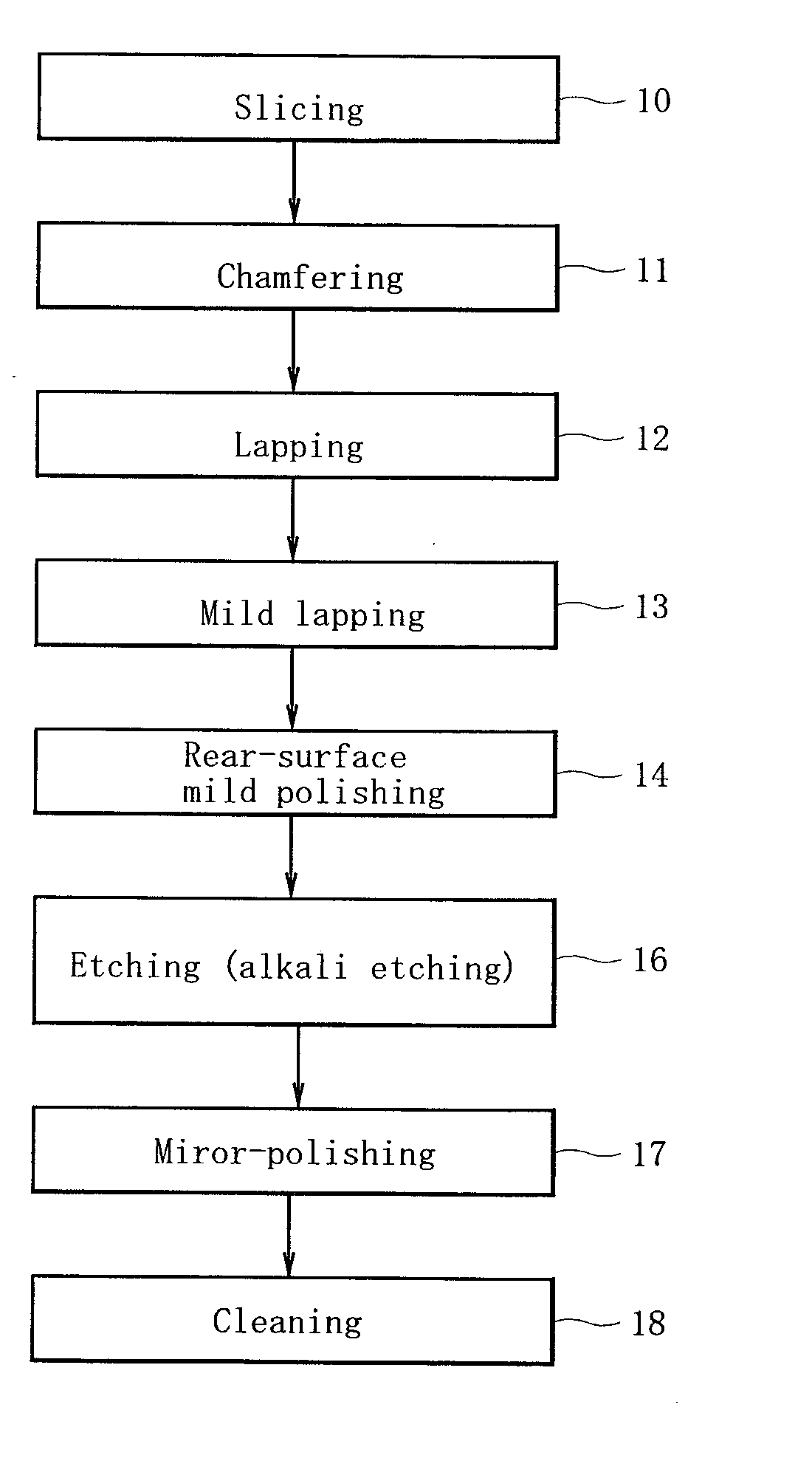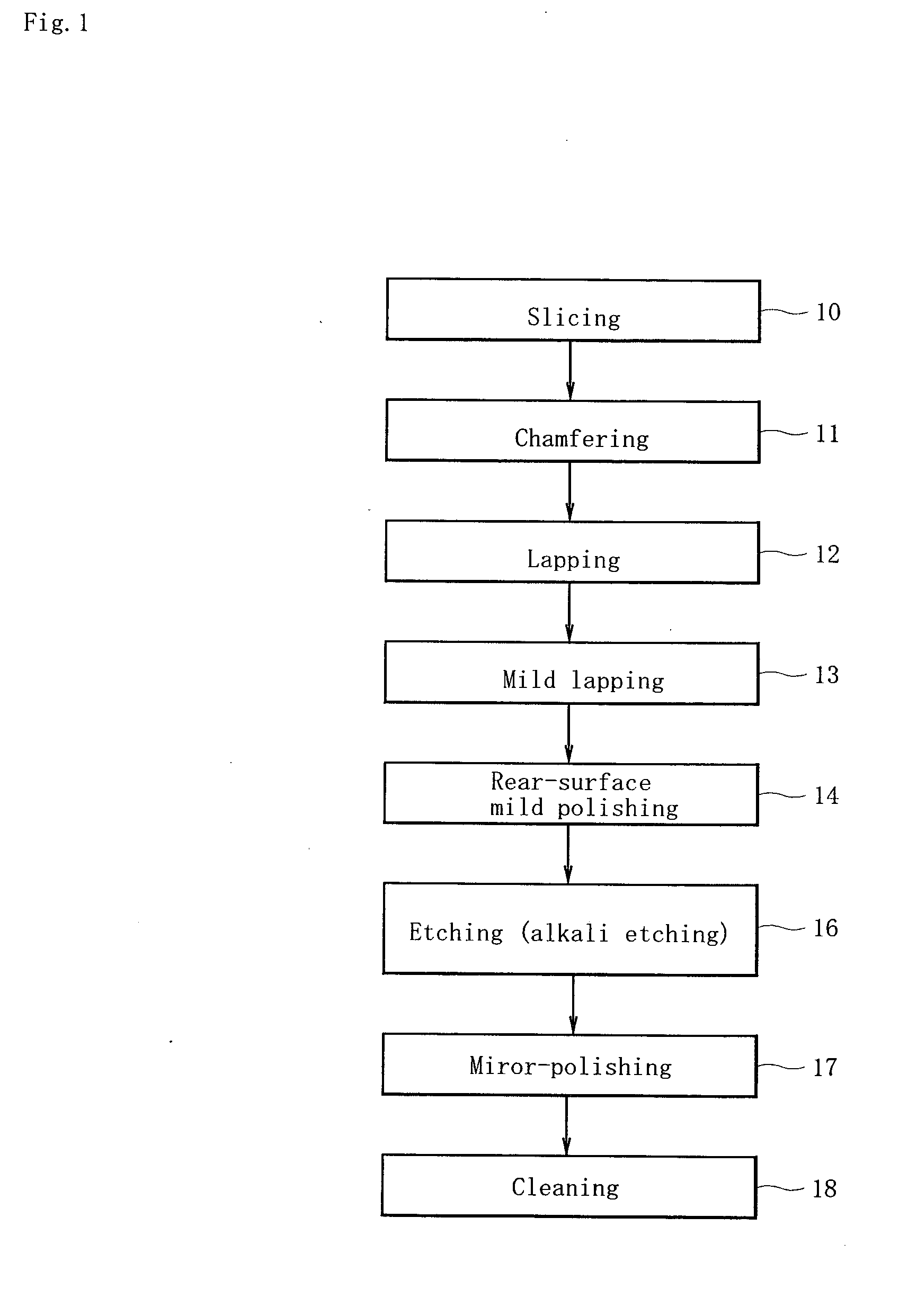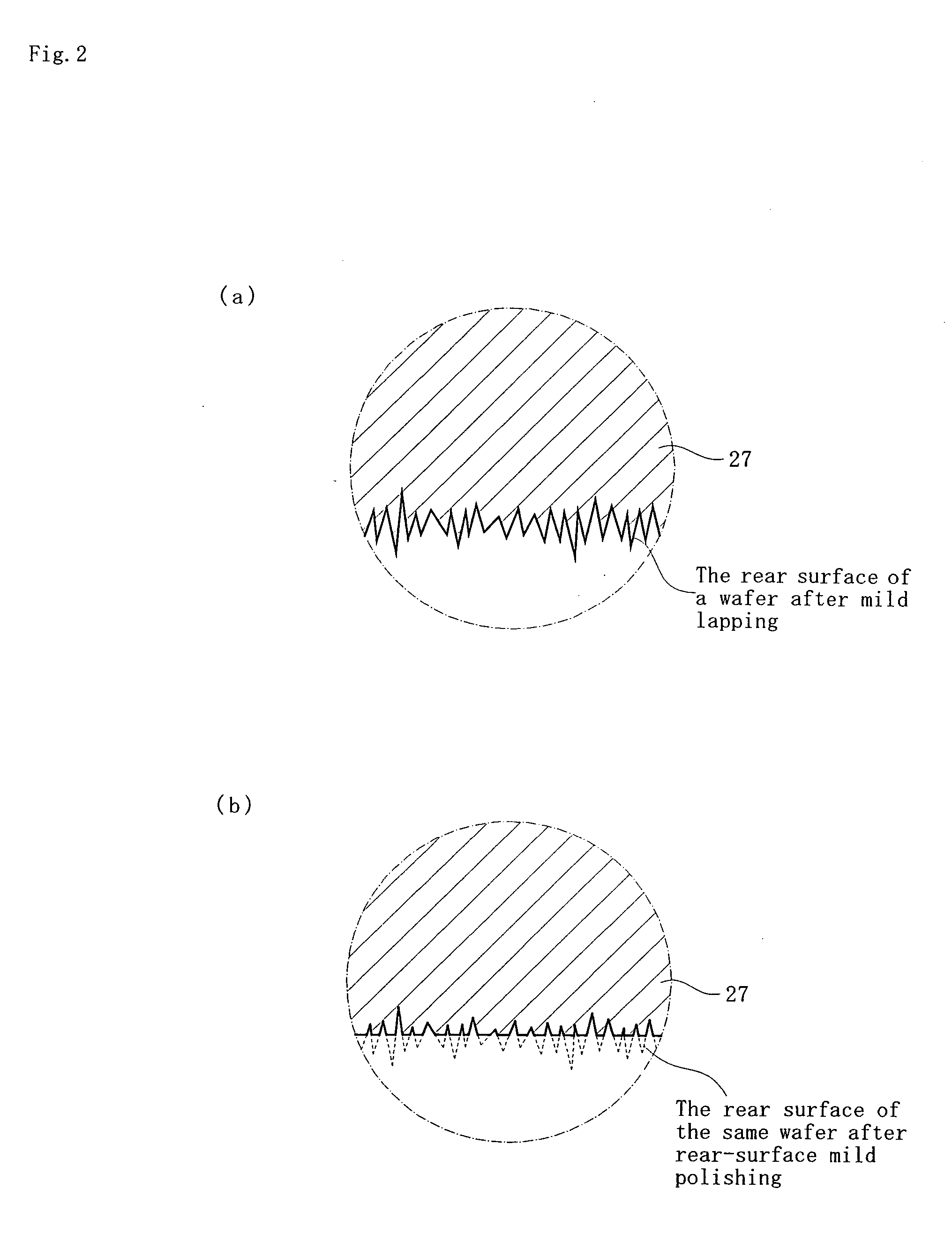Method for producing a silicon wafer
a technology of silicon wafers and silicon sheets, applied in the direction of manufacturing tools, after-treatment details, lapping machines, etc., can solve the problems of lowering the mechanical strength of the wafer, affecting the electrical properties of the wafer, and achieving uniform surface flatness, so as to achieve high flatness, eliminate residual processing distortions, and maintain the effect of reliability
- Summary
- Abstract
- Description
- Claims
- Application Information
AI Technical Summary
Benefits of technology
Problems solved by technology
Method used
Image
Examples
Embodiment Construction
[0019] Next, the embodiments of the invention will be described with reference to accompanying drawings.
[0020] At first, a single-crystal silicon ingot grown has its front and rear ends removed to produce a silicon cylindrical mass. Then, to make the cylindrical mass uniform in its diameter, the periphery of the silicon mass is scraped to give a silicon block body having a uniform diameter. An orientation flat or orientation notch is formed on the block body to indicate the orientation of crystal in the block. After the processing, as shown in FIG. 1, the block body is sliced with a specified angle with respect to the central axis of the block body (step 10).
[0021] Each wafer obtained as a result of slicing is chamfered on its periphery to prevent the development of notches and flaws there (step 11). This chamfering step can prevent the occurrence of crown phenomenon or the abnormal development of an annular ridge which would otherwise occur along the periphery of a wafer when the...
PUM
| Property | Measurement | Unit |
|---|---|---|
| time | aaaaa | aaaaa |
| total thickness | aaaaa | aaaaa |
| thickness | aaaaa | aaaaa |
Abstract
Description
Claims
Application Information
 Login to View More
Login to View More - R&D
- Intellectual Property
- Life Sciences
- Materials
- Tech Scout
- Unparalleled Data Quality
- Higher Quality Content
- 60% Fewer Hallucinations
Browse by: Latest US Patents, China's latest patents, Technical Efficacy Thesaurus, Application Domain, Technology Topic, Popular Technical Reports.
© 2025 PatSnap. All rights reserved.Legal|Privacy policy|Modern Slavery Act Transparency Statement|Sitemap|About US| Contact US: help@patsnap.com



